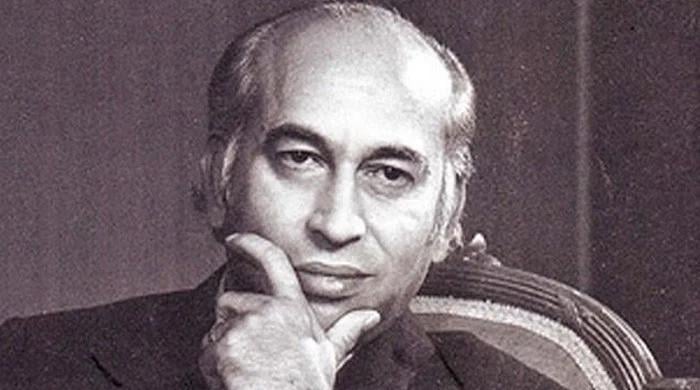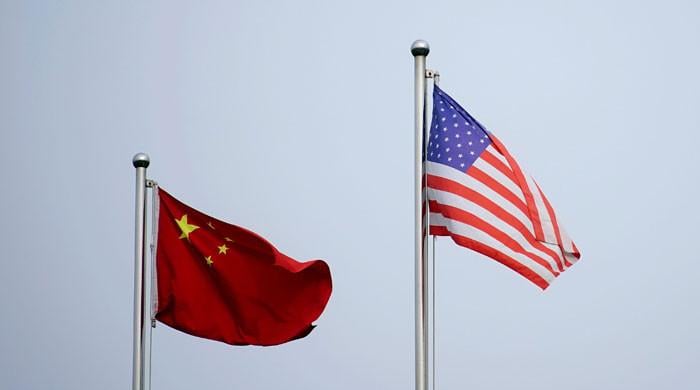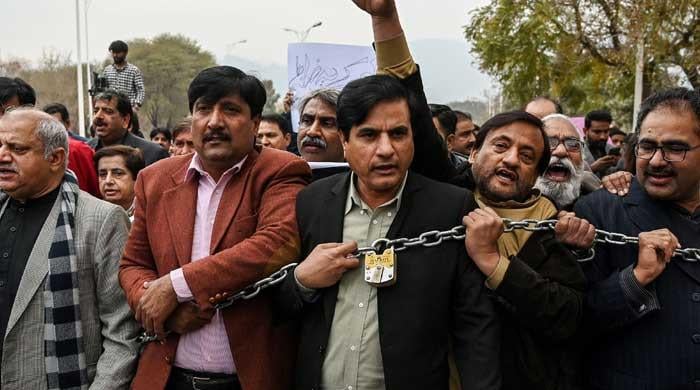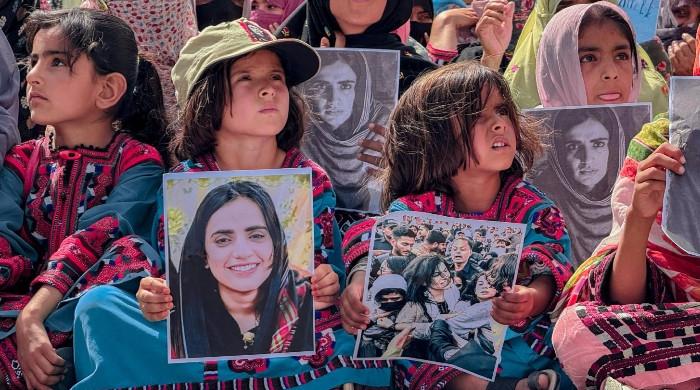Digital deadlock
Negligible contribution of e-commerce (merely 2%-3%) underscores persistent reluctance towards digital adoption
April 11, 2025

Pakistan's journey towards digitisation, characterised by ambitious policies and bold aspirations, remains constrained by weak implementation, inconsistent political commitment and inadequate financial backing.
Over the past decade, frameworks such as the Digital Pakistan Policy (2018) and Digital Pakistan Vision (2019) have emphasised technology as a driver for economic growth, governance reform and public service enhancement. Yet, these initiatives have mostly remained unfulfilled, placing Pakistan behind its regional counterparts, particularly India and, to a lesser extent, Bangladesh.
In sharp contrast, India's 'Digital India' programme, launched in 2014, has significantly accelerated the country's economic growth. India's GDP rose impressively from $2 trillion in 2014 to $3.94 trillion in 2024, ranking fifth globally, and it is projected to surpass Japan to become the fourth-largest economy by 2025, reaching an estimated GDP of $4.34 trillion.
The relentless pursuit of digitisation and a vibrant startup ecosystem fostered by initiatives such as Startup India (2015) has been a key driver behind India's remarkable economic transformation.
The Digital Pakistan Policy (2018), developed by the Ministry of Information Technology and Telecommunication (MoITT), similarly outlined an extensive roadmap aimed at enhancing broadband connectivity, fostering e-governance, nurturing startups, and embedding technology in essential sectors like health, education and agriculture.
The subsequent Digital Pakistan Vision (2019) sought to expedite these goals by prioritising financial inclusion, digital literacy and public-private partnerships. Despite these ambitious declarations, a lack of political commitment and minimal budgetary allocations over the past seven years have considerably undermined their potential impact.
Consequently, these policies have largely remained theoretical, hindered by the absence of a clear, actionable strategy with defined outcomes and timelines. While mobile and internet penetration has moderately improved, digital transactions and broader technological adoption remain sluggish.
Pakistan's global rankings highlight this stagnation, placing 150th out of 193 countries in the 2022 E-Government Development Index (EGDI), significantly trailing India (105th) and Bangladesh (111th).
Similarly, the Inclusive Internet Index 2022 ranked Pakistan 90th out of 120, and the Network Readiness Index 2023 positioned it 90th out of 134 countries — again, behind India (67th) and Bangladesh (105th).
A significant barrier to digitisation in Pakistan is its deeply entrenched informal cash economy, accounting for over 80%-90% of transactions, excluding formal banking operations like bank transfers, imports, exports, and remittances.
Cash in circulation reached Rs9.4 trillion in January 2025, representing 27% of the broad money supply (M2). The negligible contribution of e-commerce (merely 2%-3%) underscores persistent reluctance towards digital adoption.
This cash dominance is not merely cultural but reflects a rational response from businesses, particularly small enterprises, seeking to evade high tax burdens and regulatory scrutiny associated with formal economic activities. Digitisation directly challenges this informal arrangement, deterring businesses from embracing digital systems.
Further exacerbating these challenges is Pakistan's relatively substandard digital infrastructure, frequent internet breakdowns, and arbitrary blockage of social media platforms, such as X (formerly Twitter). Such disruptions severely affect user trust, hinder digital business operations, and discourage foreign investment in digital sectors.
India's contrasting success underscores the effectiveness of enabling reforms coupled with bold policy measures.
Notably, India's 2016 demonetisation significantly reduced cash dependency, curtailed black money circulation, and propelled digital payments. This disruption became a major catalyst for digital transformation. India's Aadhaar biometric ID system, covering over 1.3 billion people, provided foundational infrastructure for digital payments.
The Unified Payments Interface (UPI) processed over 172 billion transactions in 2024, amounting to approximately $2.85 trillion, decisively shifting commerce onto digital platforms. Tax reforms, especially the implementation of a single Goods and Services Tax (GST), replacing fragmented sales taxes, simplified compliance, incentivising formalisation.
Bangladesh has also achieved commendable progress through its Digital Bangladesh Vision (2009), significantly reducing barriers posed by the informal economy by easing tax pressures on small businesses. Mobile financial service bKash now serves over 60 million users, and the national web portal provides access to over 2,500 government services online.
In contrast, Pakistan's digital payment infrastructure remains underdeveloped relative to its economic size, limiting global competitiveness.
The State Bank of Pakistan's Raast system, intended for instant payments, is promising but has faced slow implementation. Although it processed 1.7 billion transactions in Q1 FY2025, its scale remains modest. The informal sector's apprehension of increased tax scrutiny continues to impede broader adoption.
Provincial-level digitisation further highlights limited progress. Punjab, despite being relatively more active, has not fully adopted e-governance, and digitisation remains confined to limited sectors such as selected health, education, and policing services.
The overall provincial landscape demonstrates low prioritisation, maintaining predominantly manual and paper-based systems. The absence of cohesive federal-provincial strategies significantly hampers national digitisation efforts.
Recent legislative initiatives, such as the Digital Nation Pakistan Act (2025) proposing a Pakistan Digital Authority and the Personal Data Protection Bill, indicate awareness of these issues. Nonetheless, concerns remain regarding the Prevention of Electronic Crimes Act (PECA), criticised for potentially stifling free expression and digital engagement.
The real challenge lies not in policy formulation but in creating a cohesive, robust implementation framework backed by genuine political commitment and provincial alignment.
Political inconsistency and financial neglect remain significant barriers. Successive governments frequently prioritise digitisation rhetorically but lack sustained momentum supported by adequate investment for effective digitisation in governance and all areas of the economy.
In stark contrast, India committed around $5 billion towards Digital India from 2015 to 2024, continuously pursuing ambitious projects, including 5G, blockchain, and artificial intelligence. To genuinely unlock Pakistan's potential, the nation urgently needs uninterrupted, affordable internet access for all citizens, policies to encourage startup growth and tech innovation and a nationwide Digital Pakistan initiative to empower the youth.
Addressing foundational structural issues, including drastic tax reforms, incentives for digital payment adoption and unwavering political commitment, is critical. Without these fundamental changes, Pakistan risks continued stagnation, trapped in ambitious yet unfulfilled policy cycles while regional peers rapidly advance into the digital age.
The writer is a former managing partner of a leading professional services firm and has done extensive work on governance in the public and private sectors. He tweets/posts @Asad_Ashah
Disclaimer: The viewpoints expressed in this piece are the writer's own and don't necessarily reflect Geo.tv's editorial policy.
Originally published in The News











